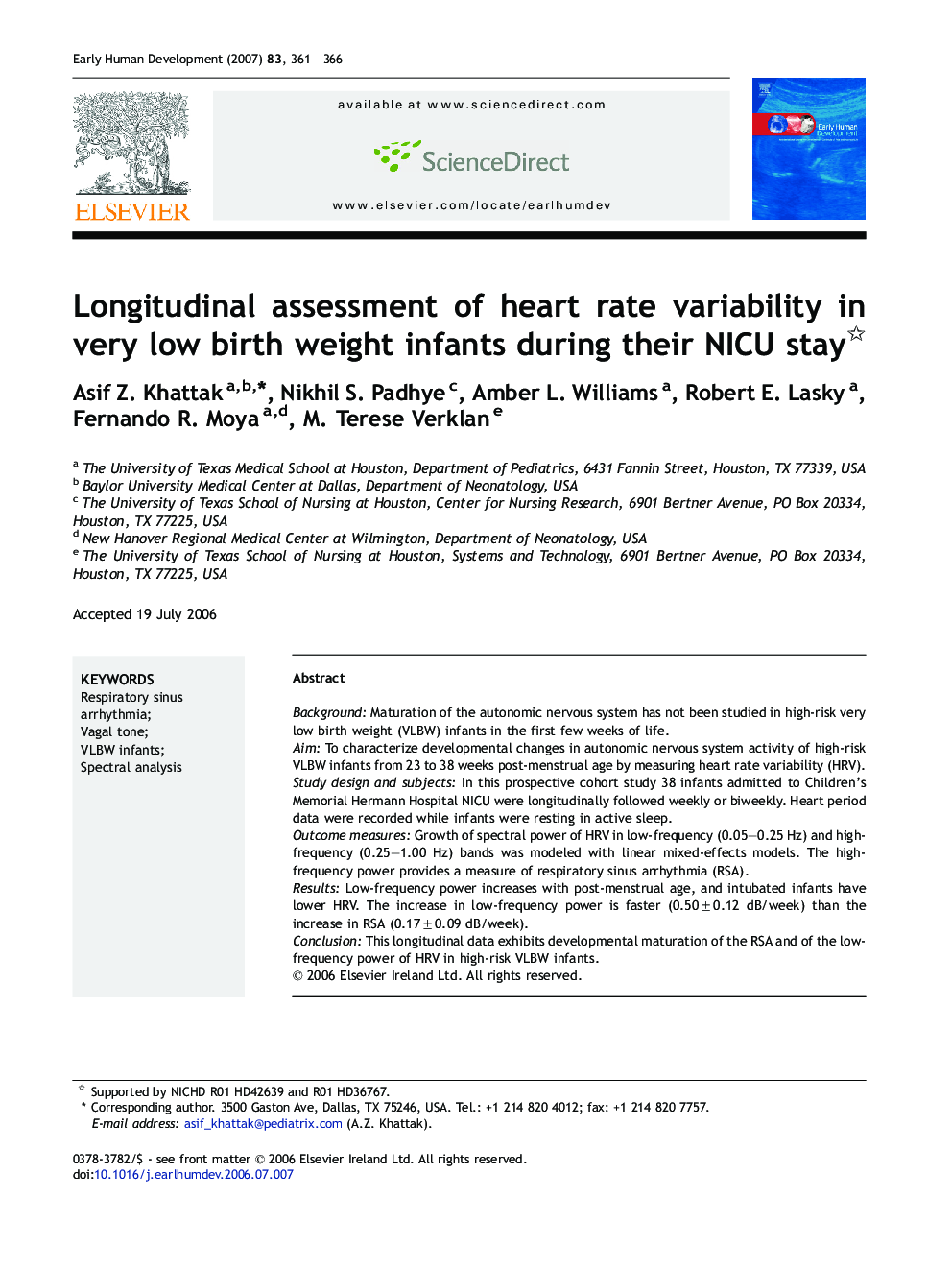| Article ID | Journal | Published Year | Pages | File Type |
|---|---|---|---|---|
| 3917720 | Early Human Development | 2007 | 6 Pages |
BackgroundMaturation of the autonomic nervous system has not been studied in high-risk very low birth weight (VLBW) infants in the first few weeks of life.AimTo characterize developmental changes in autonomic nervous system activity of high-risk VLBW infants from 23 to 38 weeks post-menstrual age by measuring heart rate variability (HRV).Study design and subjectsIn this prospective cohort study 38 infants admitted to Children's Memorial Hermann Hospital NICU were longitudinally followed weekly or biweekly. Heart period data were recorded while infants were resting in active sleep.Outcome measuresGrowth of spectral power of HRV in low-frequency (0.05–0.25 Hz) and high-frequency (0.25–1.00 Hz) bands was modeled with linear mixed-effects models. The high-frequency power provides a measure of respiratory sinus arrhythmia (RSA).ResultsLow-frequency power increases with post-menstrual age, and intubated infants have lower HRV. The increase in low-frequency power is faster (0.50 ± 0.12 dB/week) than the increase in RSA (0.17 ± 0.09 dB/week).ConclusionThis longitudinal data exhibits developmental maturation of the RSA and of the low-frequency power of HRV in high-risk VLBW infants.
